Are the touches good or bad for your back? Many people do this stretch as part of their warm-up or exercise routine. It’s a simple move—you bend forward and try to touch your toes. Toe touches are popular because they help stretch the hamstrings and lower back.
A 2024 meta-analysis published in SAGE Open Medicine by Yanyun Gou, Huangwei Lei, Xiang Chen, and Xiangbin Wang [3] found that hamstring stretching exercises can reduce pain and improve function in individuals with low back pain.
However, some experts say they might not be safe for everyone. Could they hurt your back instead of helping? Let’s take a closer look at the pros and cons of toe touches and whether you should be doing them.
Flexibility is important [1] for overall mobility, helping to prevent injuries and improve posture. Regularly practicing flexibility exercises, like toe touches, can help increase the range of motion in the body, making everyday movements easier and more comfortable.
People who stay active tend to have better flexibility, as physical activity encourages the muscles and joints to stay flexible and strong.
What is Toe Touches?
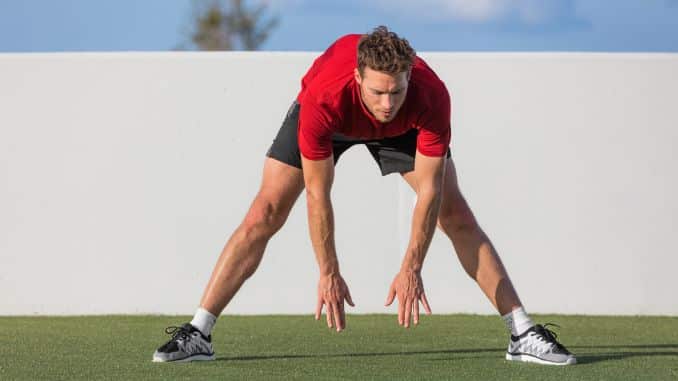
Toe touches are a simple flexibility exercise where you stand with your feet shoulder-width apart and bend forward to touch your toes, keeping your knees straight. This exercise helps stretch the hamstrings and lower back, and improves overall flexibility, making it easier to move and reducing the risk of injury.
Experts emphasize the importance of proper form when performing toe touches. Gray Cook [4] highlights movement patterns over muscle tightness.
Toe touches are not just about flexibility—they also require good balance [2].
The Risks of Toe Touches
- Toe touches can put excessive stress on the ligaments and discs of your spine, especially as you age.
- This stretch can even pinch nerves and cause more harm than good.
- Bending forward and stretching your arms toward your toes can primarily engage the lower back, hips, buttocks, and hamstrings, leading to potential strain.
- If you have a pre-existing condition like a herniated disc, the added stress from toe touches can exacerbate your pain and discomfort.
The Impact on Spinal Discs

- When too much pressure or stress is applied to the spine, it can aggravate or damage spinal discs.
- In between most vertebrae in the spine are spinal discs that act as shock absorbers and protect the vertebrae from rubbing against one another.
- Too much pressure on a spinal disc can result in a bulging or herniated disc, both of which can cause a variety of uncomfortable symptoms.
- Bending forward and putting too much pressure on the spine, like with toe touch exercises, can further aggravate damaged spinal discs and negatively impact their ability to support the spinal discs in your lower back.
How to do Toe Touches the Right Way?
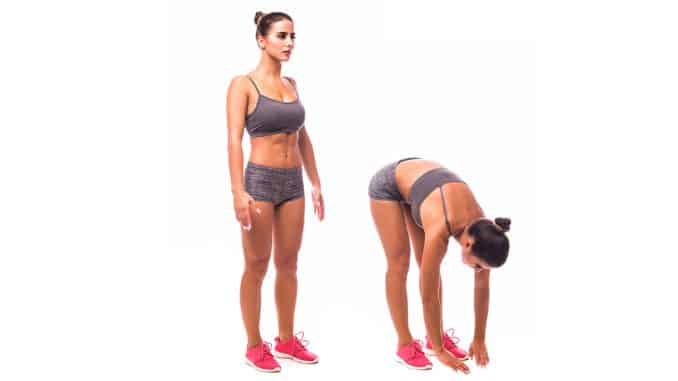
Toe Touches (Modified for Safety):
- Start by standing tall with your feet hip-width apart and knees slightly bent.
- Gently bring your chin towards your chest, then slowly start to roll down through your mid-back.
- Don’t force it—just reach as far as feels comfortable without straining your back.
- If you want to increase flexibility in your hamstrings, gently stretch your hamstrings while maintaining good posture.
Safe Stretching for Back Muscles
If you want safer ways to stretch instead of doing a toe touch, especially if your lower back, hips, knees, or ankles feel sensitive or sore, here are some easy and helpful stretches to try:
1. Seated Forward Fold
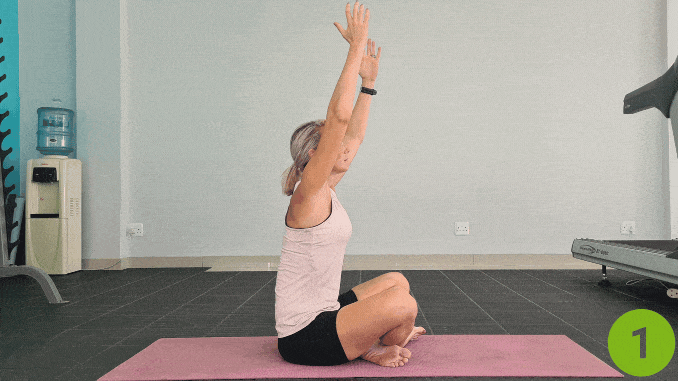
- Begin in an upright sitting position on the floor with your legs crossed, maintaining good alignment with your head, shoulders, and hips.
- Engage your core and hinge through your hips to bend your upper body forward, placing your forehead in the middle of your crossed legs.
- Then, hold the position for several deep belly breaths, in through your nose and out through your mouth.
2. Cat-Cow Stretch
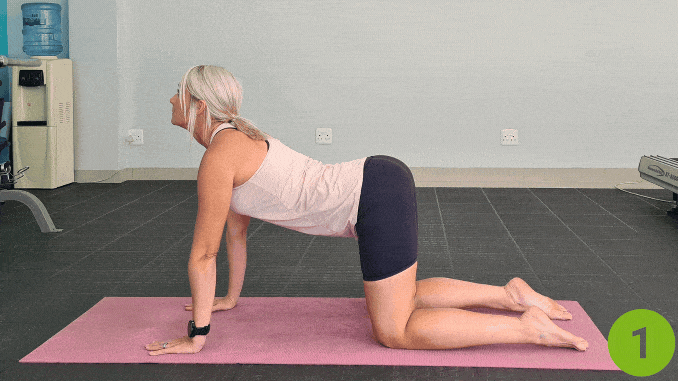
- Begin in a 4-point position on the floor with your hands beneath your shoulders and your knees under your hips. Inhale and contract your abdominal area.
- Exhale and slowly round out your mid-back as you drop your head downward.
- Then alternate by inhaling as you slowly lift your head and arch your mid-back.
- Repeat the movement, alternating directions.
3. Child’s Pose
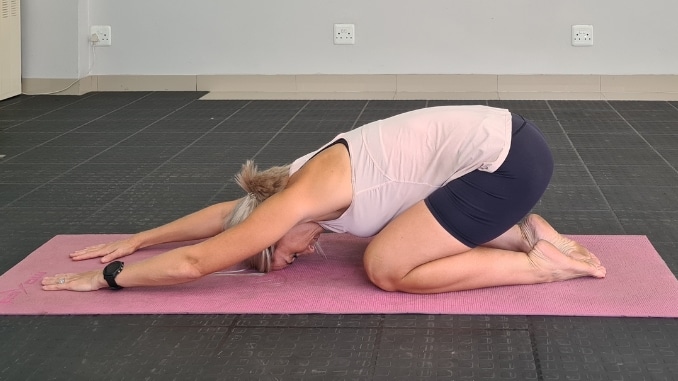
- Begin in an upright kneeling position with your knees wider than shoulder-width apart.
- Tighten your abdominal area.
- Shift your hips back to your feet, lower your upper body, and extend your arms overhead.
- Lower your forehead to the floor, relaxing your mid-back area for a light stretch.
- Take several deep belly breaths, in through your nose and out through your mouth.
- Relax and return to an upright sitting position.
4. Standing Side Stretch
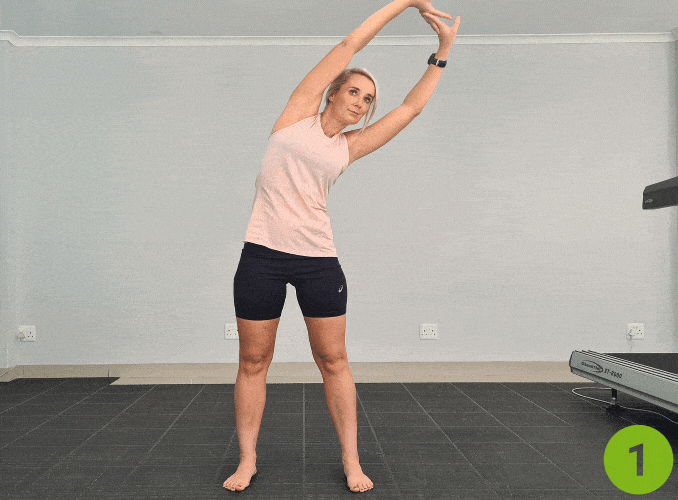
- Begin in an upright standing position with your feet wider than shoulder-width apart, maintaining good alignment with your head, shoulders, hips, and legs.
- Engage your core. Raise your arm overhead and bend your upper body to one side.
- Hold this position for several deep belly breaths, in through your nose and out through your mouth. Return to the starting position and repeat the movement on the opposite side.
5. Hamstring Wall Stretch
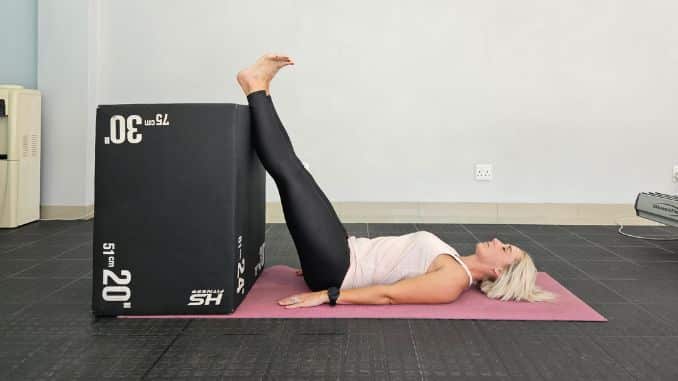
For this exercise, utilize the use of the wall, for support if needed.
- Lie on your back, knees bent, with feet flat on the floor in front of the wall or counter.
- Engage your core. Lift both legs and place your feet to the wall closed together.
- Place your hands beside your body or on your belly.
- Hold this position for several deep belly breaths, in through your nose, out through your mouth.
- Return to the starting position and repeat the movement.
6. Knee-to-Chest Stretch
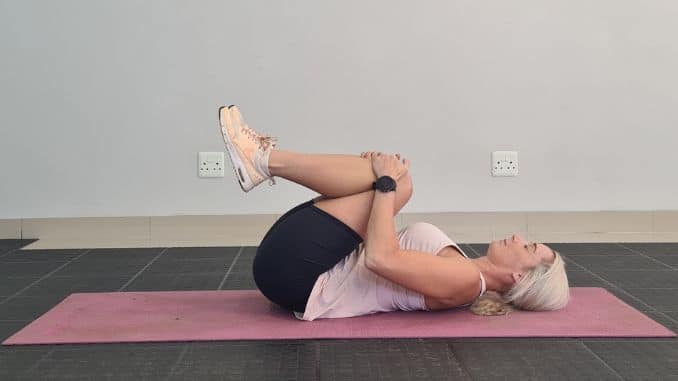
- Lie on your back with your knees bent and your feet flat on the floor.
- Raise both legs, holding your lower leg with both hands.
- Pull your knee closer to your chest to intensify the stretch.
- Hold the position for several deep belly breaths, in through your nose and out through your mouth.
- Relax, return to the starting position, and repeat the movement on the opposite side.
Conclusion
While toe touches may seem like a harmless stretch, they can do more harm than good for your back. By avoiding bad exercises and incorporating safe stretching alternatives and core-strengthening exercises, you can maintain a pain-free back and prevent future back pain.
Toe touches might not be as safe as you think! Learn the pros, cons, and safer alternatives to protect your back. Check out our Low Back Pain Solved for expert-backed solutions!
Frequently Asked Questions
Are toe touches good for you?
Toe touches can be tough on your back, especially if you’re not warmed up or stretching properly. They may cause strain on your lower back and lead to discomfort.
How to touch toes without back pain?
Bend at your hips, not your back. Keep your back straight and engage your core. While reaching for your toes, include hamstring stretches to help loosen tight muscles. Try alternating leg lifts to warm up your legs and reduce strain on your back. Move slowly and carefully.
Does lower back pain always need treatment?
Low back pain is not always related to an underlying condition, and it may go away on its own with rest and over-the-counter muscle relaxants. Consult a doctor if the pain is severe and persists for over two or three days.
You can also try the above exercises to improve flexibility and strength, which can help reduce back pain over time.
Are leg lifts bad for your back?
Leg lifts are safe if done properly. Support your back with your hands, engage your core, and lift one leg at a time. Alternate leg lifts if needed and incorporate hamstring stretches to keep your legs flexible and prevent back strain.


